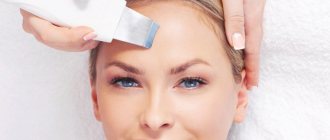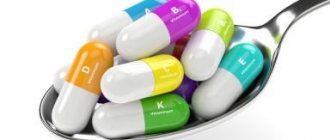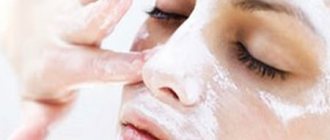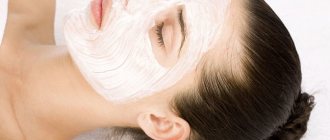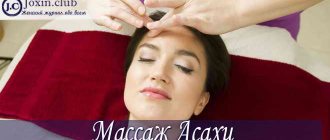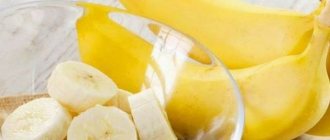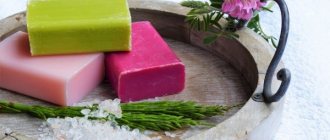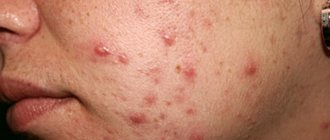Facial cleansing is one of the most common procedures in the rejuvenation laboratory cosmetology office. Cosmetologist Oksana Volchkevich shared her vision of this manipulation. ⠀
To begin with, I would like to note that the more inflammation there was, the stronger the redness and swelling will be, which can be observed within 2-3 days. During this period, it is especially important to wash your face with products with an acidic pH to relieve inflammation.
In the first days after cleansing, patients notice increased oiliness of the skin. The reason lies in the fact that sebaceous plugs that interfere with the free outflow of sebum are removed.
You can get rid of excess sebum using special wipes for removing oily shine and wiping your face with toner.
If on the second or third day you notice peeling, this is the result of exposure to acids that are part of professional cosmetics, the so-called superficial peeling (maybe 2-4 days).
But most of all, patients are frightened by sudden rashes after cleaning. Calmness: these are elements ripened in the depths that would have poured out anyway, but a little later.
Can acne appear after cleansing your face?
Acne may appear after cleansing your face. Before talking about a poor-quality procedure, it is necessary to identify the reasons why acne appears after cleansing the face, which only a specialist can do. Several factors influence the formation of acne:
- using a cell phone that touches close to the skin;
- change of facial care cosmetics;
- the use of probiotics, which cause skin conditions to worsen;
- allergies to chemical products contained in running water (the stratum corneum of the skin provides protection from the effects of untreated water);
- abuse of skin care products after the procedure.
Additional reasons that affect the appearance of acne are hormonal imbalance, stress, and foods that provoke allergies. If you follow the cleansing technology, acne may occur. The problem is that in places where deep comedones form, there is swelling and redness, which can easily be confused with acne.
After mechanical cleaning
Mechanical cleaning involves the process of squeezing out the contents from clogged pores. It is done by hand or using special tools. If acne appears after mechanical cleansing, then this is influenced by several factors:
- lack of sterility during the procedure itself (dirty hands or cosmetologist’s instruments, decorative cosmetics are not well cleaned);
- response to severe trauma to the skin, resulting in an inflammatory process;
- incorrectly performed procedure (missing some stages of cleansing);
- the presence of deep inflammation, which is a contraindication (the cosmetologist may not have paid attention to them);
- failure to follow the rules of facial care after cleansing;
- performing the procedure with obvious contraindications (exacerbation of herpes, performance during menstruation).
READ ALSO: Acne and pimples - what are they, causes, symptoms, acne treatment in a clinic under the supervision of doctors
After waiting a few days, if the acne does not go away, then you need to contact a cosmetologist who will determine the exact cause.
After ultrasonic cleaning
Inflammation of the skin after cleaning occurs due to insufficient sterility of the device, improper care of the facial skin after the procedure, obvious contraindications. The formation of acne is affected by:
- allergic reaction to ultrasound;
- location of acne in the deep layers of the skin (ultrasound acts like a massage, provoking growth to the surface);
- insufficiently cleansed skin of sebum.
In order to reduce the risk of acne, it is important to inform a specialist about your health status and infectious diseases.
What is considered normal after peeling?
- Pimples after peeling are not uncommon and are no exception, especially if exfoliation was carried out just to get rid of them. The first way to eliminate it is acne. What to do - consult a cosmetologist - if the rash is severe, antibiotics and vitamins may be prescribed;
- Peeling after peeling is more than normal - it is with peeling skin that tissue renewal occurs. Peeling should never be peeled off or even gently removed, this can lead to complications. All crusts will fall off on their own. By the way, if your face does not peel, there is nothing wrong with that either: firstly, after some peelings there is no peeling, and secondly, the characteristics of the skin could influence it.
- Redness as a consequence of the burn gradually disappears during the healing process.
- Swelling of the face - especially after a medium peel lasting up to 3-5 days, in the case of a deep peel a little longer.
What is not considered the norm and requires consultation with a cosmetologist:
- inflammatory processes;
- cracks in the skin (as a result of poor hydration);
- pigmentation (may appear if there was no sun protection or the patient has a high predisposition);
- erythema;
- allergy;
- exacerbation of herpes;
- hypertrophic and keloid type scars.
Answers to important questions
The care and consequences are more or less clear, but here’s how things are going with the return to normal life.
- Is it possible to go to the bathhouse or sauna , to the pool and take a bath after peeling?
No. Water procedures in the pool are fraught with infection, and chlorinated water is dangerous due to irritation, the possibility of getting burned and drying out the skin.
Taking a bath, sauna and bath procedures are dangerous due to high temperatures, and this in turn causes sweating - that is, skin irritation, plus in a warm environment, bacteria actively multiply. You can return to your favorite water treatments after the skin has completely healed.
- Can I exercise after peeling?
Any workout leads to sweating, which, as in the case of bath procedures, leads to burning and irritation of the skin.
- When can you sunbathe/go to a solarium?
Sunbathing, both natural and artificial, is highly likely to cause hyperpigmentation, so you should abstain from tanning during the peeling course and for a month.
It is this factor that makes it preferable to carry out peelings during periods with minimal solar activity.
- Can I drink alcohol after peeling ?
Definitely no - at least a week or two, if peelings are carried out in a course - abstain for the entire period!
Why and what is fraught with:
- increased burns when interacting with chemical residues in the skin;
- intense erythema;
- increased swelling of the face and eyes;
- ineffectiveness of some types of peelings, the appearance of unwanted reactions of the body.
- Is it possible to make face masks?
Natural masks are completely prohibited, as they can cause inflammation on burned skin, injure particles and cause allergic reactions.
It is better to pay attention to professional masks designed for post-peeling care - mainly aimed at deep moisturizing, soothing and restoring the skin.
- When can you put on makeup or use foundation after a peeling procedure?
After superficial peeling, as a rule, it is allowed to apply cosmetics (tone, highlighter, powder, etc.) every other day. After medium and deep peeling, you should abstain for 7-14 days. It is worth noting that mascara and lipstick are not included in the prohibited list.
- Is it possible to cleanse your face after peeling?
In some cases, this is possible; after some light types of exfoliation, it is also possible to combine procedures. Only a cosmetologist can answer with accuracy.
- Is it possible to do peeling after biorevitalization and mesotherapy?
As a rule, there is no prohibition on carrying out; procedures often take place in parallel or at intervals. Only a cosmetologist can give an exact answer in accordance with the desired result and skin condition.
- Is it possible to peel after Botox/Dysport and filler?
Only a cosmetologist can give an answer, taking into account the time elapsed after the procedure and what type of peeling should be carried out. The fact is that after Botox or filler injection, the blood vessels in the treated area are compressed, this condition slows down the process of skin regeneration.
Which rashes after cleansing are normal?
After cleansing the face, the skin gets rid of toxins and impurities, so it is normal for acne to appear. They go away after a few days (3-6 days) on their own. It is worth paying attention to how skin irritation appears in general. Residues of sebum, dirt, and decorative cosmetics penetrate into the deep layers of the skin and accumulate for a long period in the pores. When cleaning, a cosmetologist uses masks for deoxidation, as a result of which the plugs are pulled upward. After such cleaning, small purulent pimples may appear. And the problem is solved by applying the recommendations of a cosmetologist.
If chemical or vacuum peels were used to cleanse the face, then such an aggravation is in the order of things. In some cases, rashes are considered normal even if the skin looks healthy. Peeling enhances cell regeneration and stimulation of processes. Within 2-3 weeks, when it becomes clear. And the result of the procedure can be seen after a while.
Good to know! If the rash covers large areas of the skin, you should consult a doctor.
What rashes after cleansing your face are dangerous?
If acne appears after cleansing your face, in some cases it is necessary to consult a dermatologist for help. Manifestations of a dangerous rash:
- inflamed skin has a bright red color, like after chemical burns;
- the appearance of small pustules that cause itching (allergies are triggered by cleaning or care products).
READ ALSO: Wen under the eyes: how to remove and get rid of them forever, reasons and how to remove them, what white wen look like in the photo and why they appear, can it be squeezed out
If the rashes are filled with fluid, then this is a sign of the development of herpes.
The use of greasy care products is a favorable environment for the formation of infection.
Important! It is not recommended to independently identify the cause and eliminate it, as it can complicate the situation.
What does your face look like after the procedure?
Before making an appointment for a facial cleansing, many people are interested in what their face looks like after the procedure. In some cases, redness, slight swelling, and pimples may appear.
As a rule, the skin becomes smooth and elastic after cleansing. It is cleaned and with proper care the desired effect is achieved after the first time.
How can you tell if your cleaning was done poorly?
After the procedure has been completed, it is difficult to accurately determine that the cosmetologist did not perform the cleaning properly. But during the cosmetic procedure itself, you need to pay attention to some warning signs:
- During the examination, you should not touch the skin. The cosmetologist must determine the condition of the skin (dryness or oiliness, roughness) and take into account the features when cleansing.
- A professional cosmetologist, when cleansing the skin of the face, pays attention to the condition of the ears. Listening to music while using headphones clogs the pores, resulting in the formation of pimples in the ears.
- The specialist does not impose this or that cosmetic product, nor does he scold the neglected condition of the skin. A competent cosmetologist will tell you how to care for your face, taking into account the shaped features.
Inaccuracies in the work of a cosmetologist are a signal for the need to seek advice from another specialist.
Pros and cons of the procedure
An ultrasonic cleaning session activates metabolic processes, promotes regeneration and renewal of the epidermis, improves firmness, hydration and elasticity of the skin. The advantages also include: painlessness, uniform cleansing, short recovery period, acceptable use for increased sensitivity of the skin. But not everyone is suitable for ultrasonic facial cleansing. Contraindications:
- Conducting recent deep chemical peels;
- Pregnancy;
- Viral and infectious diseases in the acute stage;
- Hypertension;
- Tumors;
- Bronchial asthma;
- Inflammation of the facial nerves;
- Postoperative rehabilitation;
- Skin allergies;
- Epilepsy;
- Presence of metal implants.
Also, facial cleansing is contraindicated for acne, furunculosis, and eczema. Often, a procedure performed for acne can lead to a worsening of the epidermis, as the infection can spread to surrounding areas. But facial cleansing for rosacea (vascular network located close to the surface of the skin) is done only in this way, since it is the most gentle.
How to care for your face after cleansing
If pustules appear after cleansing your face, it is important to consult a cosmetologist about what to do. In some cases, it is necessary to use certain medications to treat acne.
It is important to wash your face twice a day and remove makeup before going to bed. When applying decorative cosmetics, it is necessary to use them in limited quantities; you should not use products that contain fragrance, as some substances clog pores. When exposed to sunlight, apply sunscreen.
READ ALSO: The best daily acne cleansers for teenagers: reviews
It is useful to use aloe and chamomile decoction for washing. For washing, use mineral (non-carbonated) or boiled water. The water should not be hot so that the pores do not open and infection does not occur.
It is not recommended to use a scrub for dry skin more than once a week, and choose a cleanser with oils. For oily skin types it should be done 2 times a week. It is recommended to use a cleanser with ammonium lactate or zinc. You can make masks with cosmetic clay (white or blue), which has a positive effect on the oiliness of the skin. To moisturize, apply a gel or serum with anti-inflammatory effects.
Cosmetic products that form an additional protective film are contraindicated; they nullify the entire cosmetic procedure performed. It is forbidden to squeeze pimples, as there is a risk of infection, which will leave scars. There is no need to rush with homemade masks or massages so as not to spread the infection. It is recommended to replace cotton pillowcases with silk ones so as not to cause microtrauma to the skin during sleep. It also needs to be changed regularly to eliminate the risk of bacterial contamination.
Interesting! It is important to adjust your diet and avoid foods that increase skin oiliness (alcohol, spicy foods and fast foods).
Video: consequences of facial cleansing - how to disguise pimples and blemishes?
Why is cleaning necessary?
The vast majority of women, when applying daily makeup, use foundation, powder, and heavy blush. Such cosmetics gradually clog the pores, and if you add to this street dirt, dust, exhaust fumes and the habit of touching your face with your hands, it turns out that over time the skin becomes completely unable to breathe. Then even on a face that is not prone to inflammation, acne, pimples and comedones appear. Squeezing them on your own is a thankless task, because the situation can only get worse.
An esthetician-cosmetologist can work in a variety of places: beauty salons, perfumeries, hairdressers, parapharmacies, etc. Thanks to the growth of healthcare institutions, it also finds its place in fitness centers, Thalassotherapy or balneotherapy. It can also be used as a cosmetic cosmetic specialist in a laboratory or in a cosmetics company producing cosmetics.
As an employee or responsible
There are cosmetics companies in the house whose employees work in maternity hospitals, nursing homes, hospitals or directly with individuals. Depending on whether she works as an employee or as the director of a beauty institute, her responsibilities are not the same. An esthetician may have to move, especially when working for herself or a cosmetic brand. Note: more and more men are targeting this profession still for women.
Cleansing significantly improves skin
But contaminated cells cannot fully perform the most important functions - protective, respiratory, thermoregulatory, and suction. In order for them to work again at full strength, the skin needs help. This is precisely why it is advisable to go to a good, trusted specialist for professional cleaning every six months. Moreover, in addition to hygienic care, it will also give aesthetic pleasure, making your face noticeably better. High-quality cleaning:
An esthetician usually begins his professional life as an employee. In a few years she may open her own institute or store. In recent years, the possibilities have expanded significantly. In addition to developing a male clientele, new techniques emerged. Given these developments, recruiters value multidisciplinary, multidisciplinary profiles. Employment is also happening in rural areas: geographic mobility remains a key factor in finding work.
Mechanical facial cleansing
Some of them dream of integrating television, cinema, theater or fashion, but the spaces are very expensive. A cosmetologist may also work as a cosmetic product demonstrator or spokesperson for major brands, commercial functions generally well paid.
- gently exfoliates the stratum corneum of the skin;
- thoroughly cleanses pores, eliminating acne and comedones;
- removes toxins and waste from cells;
- accelerates blood circulation and improves metabolism;
- restores the protective functions of tissues;
- makes the skin smoother, firmer and more elastic;
- improves complexion.
At the same time, the prices for this procedure are usually quite reasonable and do not hit the wallet too hard. In general, it is not surprising that cosmetic facial cleansing is in such great demand among ladies of all ages.
However, other degrees are required to develop and acquire responsibilities. Since I was 16, I have been attracted to aesthetics. I like communication with clients and the variety of services; the days are not monotonous! A job portal dedicated to beauty and fitness professionals.
National Confederation of Beauty Institutes. National Union of Beauty Institutions. National Confederation of Aesthetics and Perfumery. Christina Kuinines, former director of strategic research at Sanofi, wanted to find the first values of her research in pharmacy and the two universes she was working toward for her second professional life, after a 30-year career in 5 major groups in the pharmaceutical industry. She has always been attracted to: natural cosmetology and aromatherapy.

